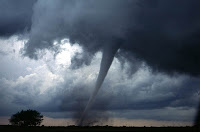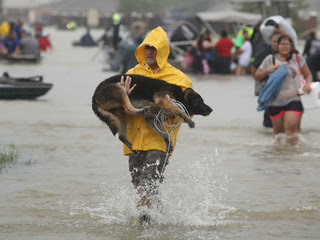High winds roar through
with water on their tail,
The bluster of a spiral curl
makes the earth wail.
People clutch their pets
in hopes of safety found,
Make a plan, work it out,
for you and your greyt hound.
Alice Brown
A hurricane blows through your area, a tornado’s high winds corkscrew through your yard, or possibly an earthquake shakes your house. With all the press given the scourge of disasters lately, my worry quotient has risen a notch. Between hurricanes, earthquakes, tornados and flooding as well as who knows what else, the prudent course of action would be to determine what I would do if a disaster struck my area. Since I live on the coast of Virginia, my attention seemed drawn to hurricanes Harvey, Irma, Jose, and Maria.
 |
| pixabay.com |
My dogs are my fur children, and I would never consider leaving them if a hurricane struck. Most human shelters refuse to accommodate pets so for many of us, an alternative must be found. Researching this problem on the internet, I found sites that give significant direction to developing a disaster preparedness plan. I must say I felt overwhelmed by it all, but know that this preemptive advice could be life saving.
 |
| pixabay.com |
Making and following a plan can save time and lives when a disaster strikes. One of the first steps in this process is to stay informed. Ready.gov suggests having access to a NOAA weather radio, getting information from www.weather.gov/nwr, or downloading the Fema app. Having advance information concerning weather conditions can aid in advanced preparation for any disaster.
 |
| pixabay.com |
According to my source material having a viable evacuation plan is of utmost importance especially when pets are involved. Identifying shelters in your area that are available and accept pets like pet-friendly hotels, boarding facilities, or possibly out of town friends are a smart first step. Microchipping pets and keeping up-to-date medical records helps to maintain your pet’s safety.
| Emma in resting mode. |
A disaster supplies kit for your pet assembled and ready to go makes leaving at a moments notice easier. Food and water should be number one on the list. Sources vary in setting aside a food supply of three days to a supply of two weeks so use your best judgment. Stored food should be rotated every three months for freshness. Your pet’s important papers and medical records as well as a first aid kit, collars with id and rabies tags, and leashes should be added. Having a crate or carrier available, items for sanitation purposes, and treats, toys, and bedding to make your pet feel comfortable complete the kit. Having a picture of you and your pet together in case of pet loss would also be wise.
| Kiowa just looking cute. |
By planning ahead for a disaster and then developing a disaster kit, I will feel better prepared in case the unforeseen happens. Consider what might happen where you live and plan accordingly. Even if your kit isn’t totally assembled, you will at least know what items are needed. We should all have an idea of where to find safety for ourselves and our pets when the unexpected occurs.
Pets & Animals, www.ready.gov
Disaster Preparedness for Your Pet, Centers for Disease Control and Prevention (CDC), www.cdc.gov/features/petsanddisasters/index.html
Pet Disaster Preparedness, Red Rover, redrover.org/pet-disaster-preparedness


